What Is Hydroponics? - An Introduction To Hydroponics
How hydroponics works and its benefits
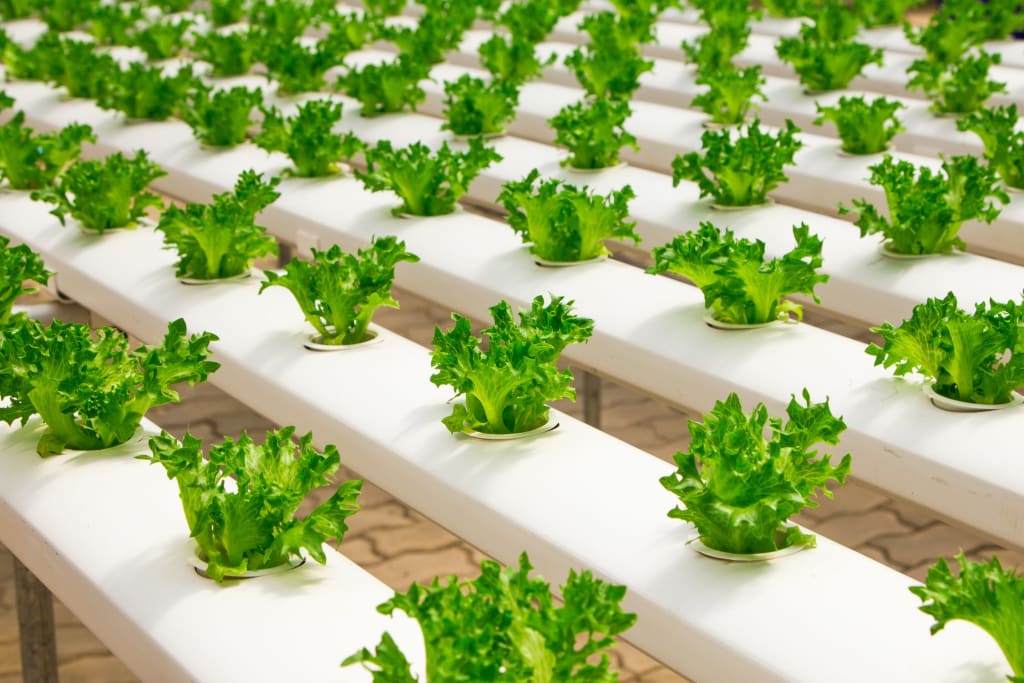
Hydroponics comes from the ancient Greek formation of “hydro”, meaning water, and “ponics”, meaning labour. The water is doing the work here and enabling the fast growth of plants.
Plants grow through a process called photosynthesis, in which they use sunlight and a chemical inside their leaves called chlorophyll to convert carbon dioxide (CO2 ) and water into glucose and oxygen.
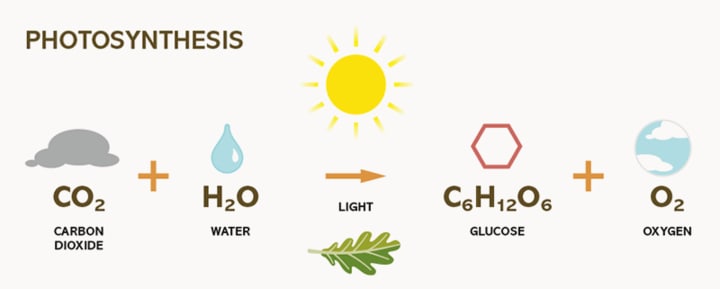
As you can see there's no mention of soil anywhere in the above equation and that's all the proof you need that plants can grow without it.
What they do need is water and nutrients, both easily obtained from the soil. But if they can get these things somewhere else, let's say by a nutrient-rich solution, they can grow without soil altogether. That's the basic principle behind hydroponics
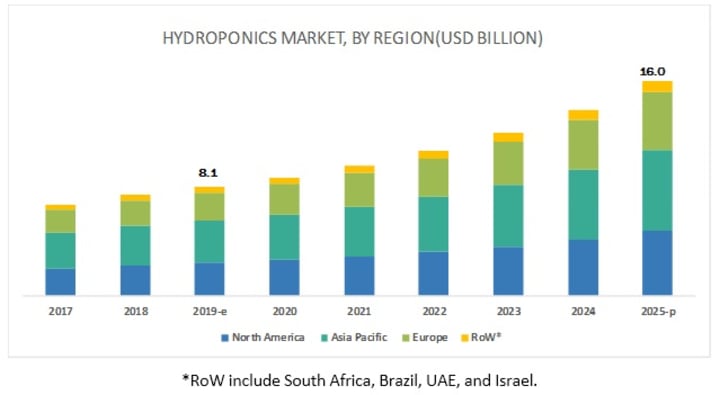
Hydroponics is highly productive, conservative of water and land, and protective of the environment. Hydroponics culture requires only basic agricultural skills.
Hydroponics has been around for hundreds of years and helped to enable population growth as the availability of arable land decreases.

Instead of soil, Hydroponics use organic substances like perlite, coco coir, rock wool, clay pellets etc. These substances have provided numerous benefits to growers everywhere.
Increased growth results are from allowing the roots of each plant to come in direct contact with the nutrient solution. This is further enabled by the increased access to oxygen compared to its soil counterpart.

In theory, you can grow any plant hydroponically but as it is always the case with gardening some things inevitably do better than others.
Fruit crops such as tomatoes, strawberries, lettuces and herbs, are among plants that do particularly well.
Benefits of Hydroponics
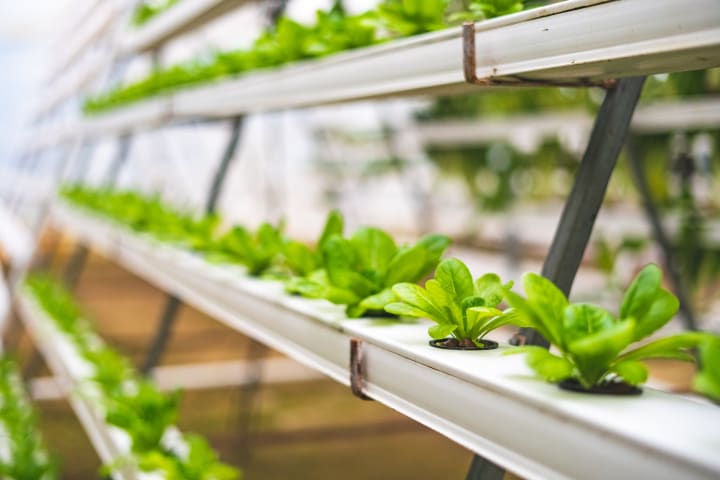
By giving constant and easily available nutrition, hydroponics allows plants to grow up to 50% faster than they would in soil.
It is great for both the environment and the grown product, hydroponic gardening virtually eliminates the need for herbicides and pesticides compared to traditional soil gardening.
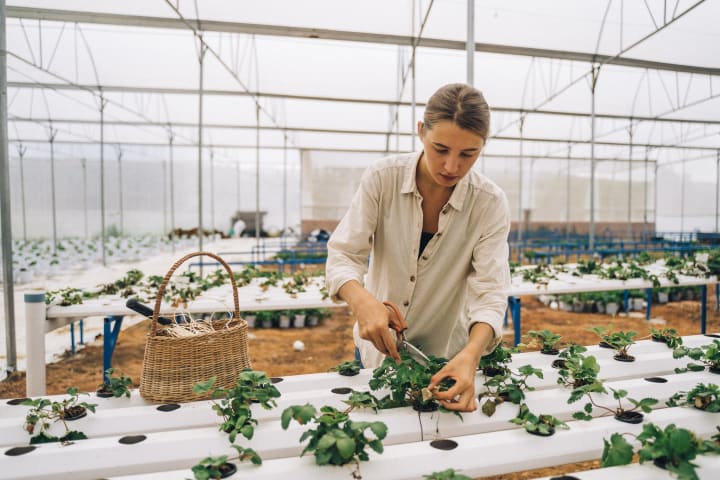
Any water that is used in hydroponic gardening stays in the system and can be reused, which helps in reducing the constant need for a fresh water supply
Arable land is often in short supply and gardening space continues to decrease. It is a great option when you lack yard space or have a tiny balcony, hydroponics also lends itself well to indoor gardening.
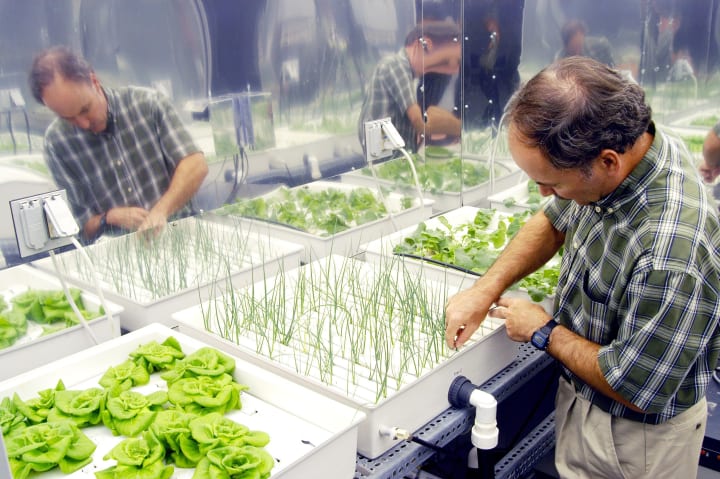
Hydroponic systems are subject to less evaporation, are more controlled (i.e. temperature, humidity, and air composition), and are better for the environment due to the reduced pollution and waste.
The ancillary benefits of using hydroponics are also massive. First off, there are no weeds, fewer pests, and minimal diseases. This is because the plants are kept in a controlled area and don’t use soil. As a bonus, the insecticide requirement is significantly reduced.
Types of Hydroponic systems
Hydroponics is a complex mechanism and there are many ways you can use it to ensure the nutrient solution reaches your plants. These techniques vary in the investment required and level of complexity.
1. Deepwater Culture
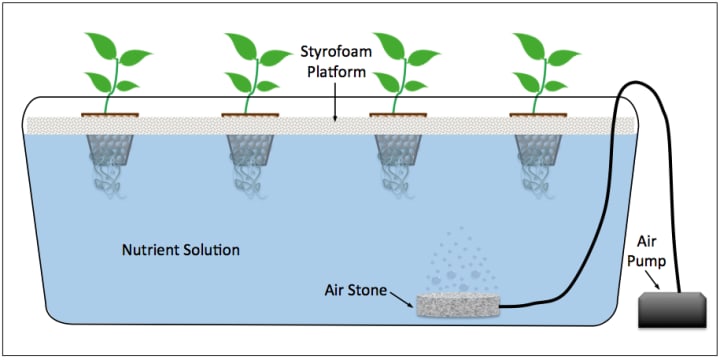
Deepwater culture is also known as the reservoir method, this is thought to be the easiest method of running hydroponics. The roots are suspended directly inside the nutrient solution and growers must utilize an aquarium air pump to oxygenate the solution so the plants don’t drown.
2. Aeroponics
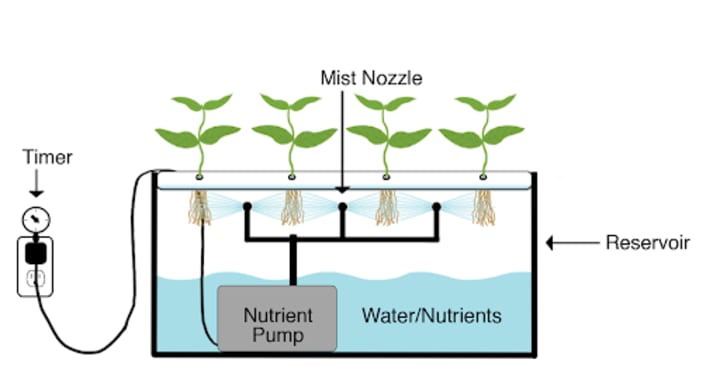
This depends on suspending the roots in the air and misting them with the solution. You can promote growth this way and do it by hitting the roots with either a pond fogger or a fine spray nozzle.
3. Drip System
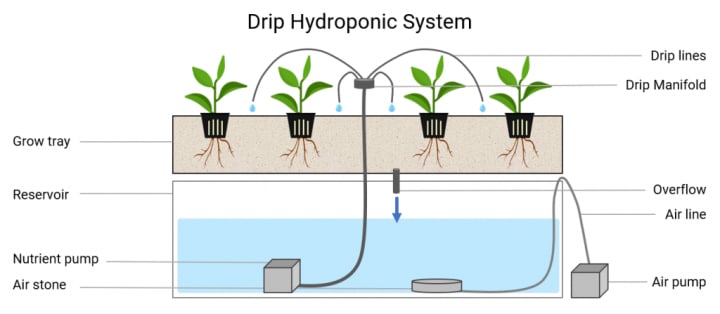
With the drip system, a slow feed of nutrient solution is distributed to the hydroponics medium using a slow-draining medium like rock wool, coconut coir, or peat moss.
4. Nutrient Film Technique
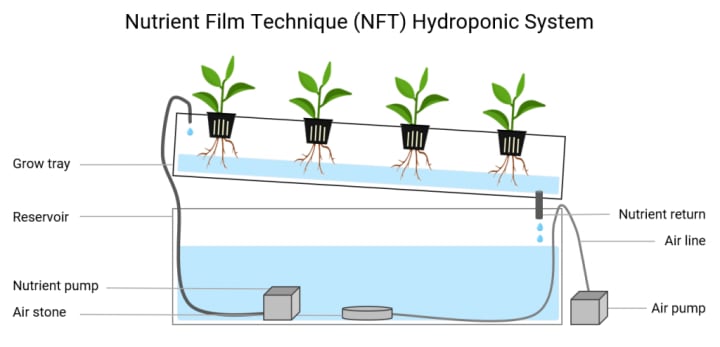
This method depends on oxygen absorption from the air by running a continuous flow of nutrient solution over the plant's roots. To properly execute this method, the plants must be grown on a slight tilt that allows the solution to flow downwards.
5. Wicking
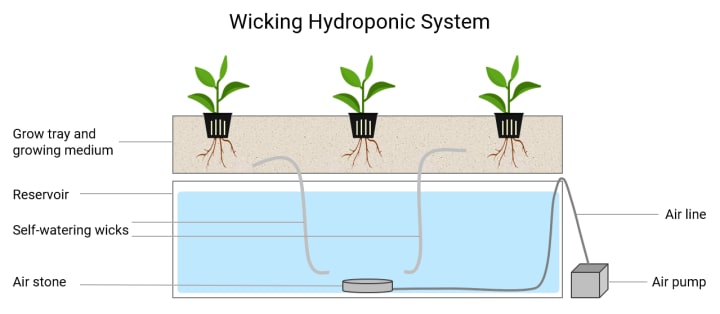
Wicking is considered to be the easiest and most cost-efficient method. The plant and reservoir of a nutrient solution are connected by the wick, which slowly feeds them over time.
Absorbent materials like cotton are the most common medium and slowly move the water/nutrient solution to the plant.
Potential Harms
However, hydroponics isn’t always the best option for all vegetables. There are naturally going to be higher costs in a system where you have so many more considerations than plants grown in soil.
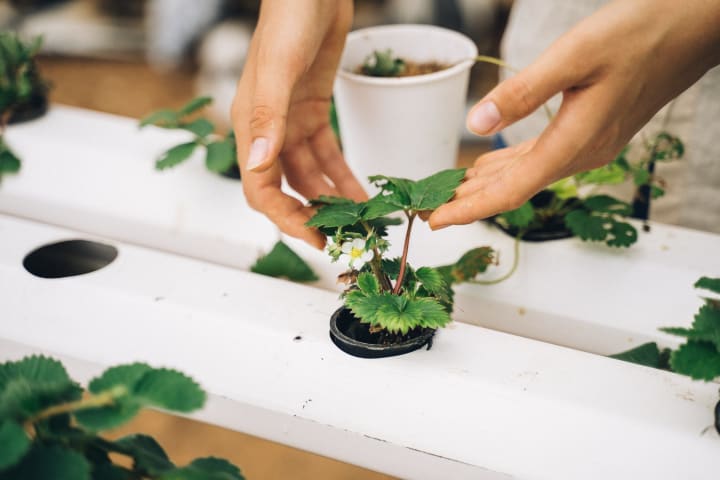
The setup and creation of a hydroponic system can be very time-consuming, and there’s always the worry that an unforeseen event like a pump failure may harm the plants. And finally, farmers still need to be careful about how they control their nutrient solution and pH levels
Resources
- Hydroponics - university of Arizona
- Hydroponics - explainthatstuff.com
- What is Hydroponics? - edengreen.com
- Growing soil less with Hydroponics - thebetterindia.com
About the Creator
Enjoyed the story? Support the Creator.
Subscribe for free to receive all their stories in your feed. You could also pledge your support or give them a one-off tip, letting them know you appreciate their work.






Comments
There are no comments for this story
Be the first to respond and start the conversation.